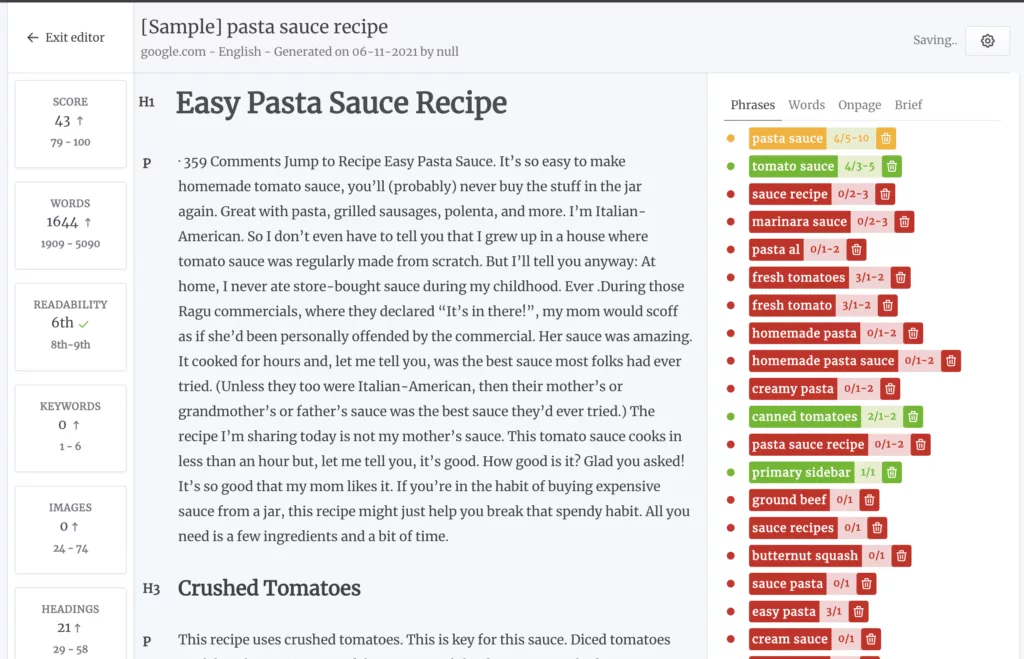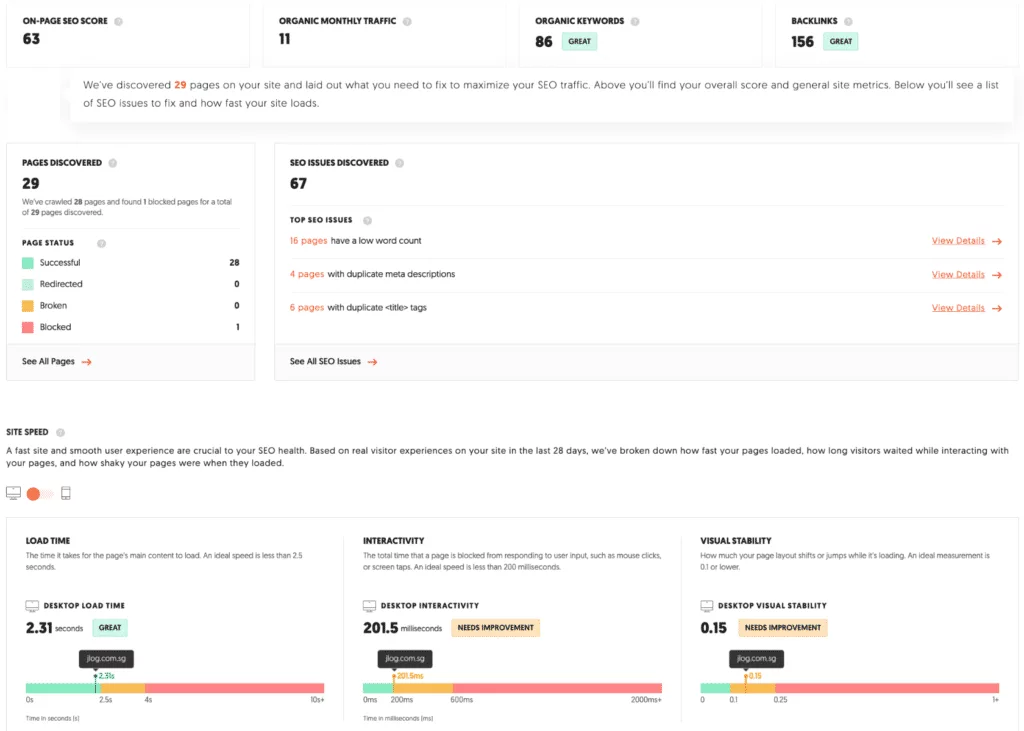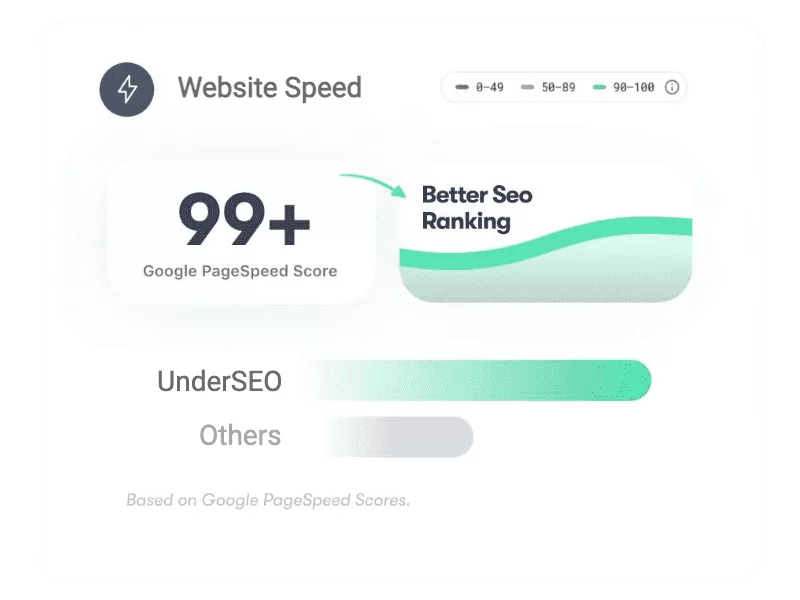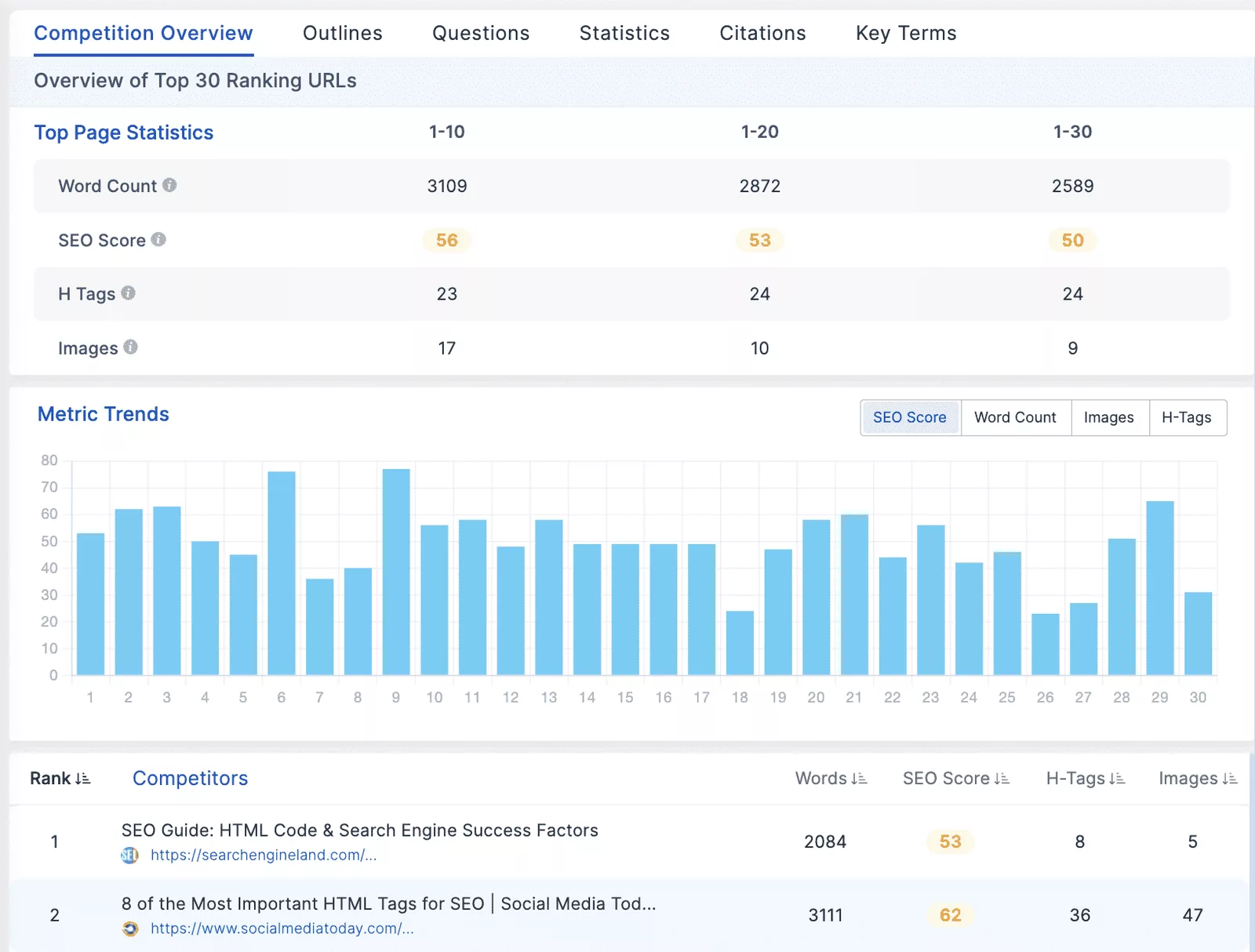HTML tags are the building blocks of the web. They define the content of your page and allow search engine crawlers to index the page. Every search engine crawler has its own set of search engine optimization (SEO) requirements, but the basics remain the same. The search engine optimization community agrees that using good HTML tags leads to a better ranking in search results.
Do HTML tags still matter for SEO today?
Today, many people believe that HTML tags no longer play a significant role in search engine optimization (SEO). However, this is not always the case. In fact, using the right HTML tags can still help improve your website’s visibility and potential traffic.
When a search engine crawler comes across your content on the web, it looks at the site’s HTML tags to determine how to properly read and display it. This includes things like font size, color scheme, and positioning within the page.
Meta tags are especially important because they will change how your site appears in SERPs (search engine results pages) and how many people will be interested in clicking through to learn more about you or purchase something from you. Adding meta-tag information helps create an accurate picture of who you are as an organization so that potential customers can find you easily online.
The Benefits of Using HTML Tags for SEO
HTML tags can help search engine crawlers read and index webpages more efficiently, which can boost website visibility in search results. This can result in better rankings for the web page and a higher click through rate from the search engine result pages to your website.
By using HTML tags, you can emphasize relevant keywords and key phrases on your web page, making your content a better match for the search results over competitors. This can help improve rankings in Google search results and enhance user experience.
Likewise, by optimizing the source code of your web page with HTML tags, you can help emphasize relevant keywords and keyphrases on the page, making your content more prominent to searchers. This can increase the chances of your web page appearing in the rankings of relevant keyword search queries.
Additionally, HTML tags are the native language of Google crawlers and are important in communicating the relevance of content to search queries. Thus, it’s vital to understand them and incorporate them appropriately into web pages for better optimization results.

1. Title tag
Title tags are essential for search engine optimization. title tags are used in search results to highlight the relevant content of a page, and they play a crucial role in keyword optimization. title tags provide valuable information such as the page title, keyword, and description that can help search engines understand the page content.
In addition, title tags are used to rank web pages in search results. The title tag acts as the page’s title and is one of the ranking factors for search engine optimization (SEO).
The title tag should include keyword optimization that ensures that it has the same keyword as the meta description and page title tag. By optimizing title tags with keywords and copy, you can increase keyword rankings and click-through rates, which can ultimately lead to higher rankings on search results pages.
Request Free Review
We start by reviewing your website and then take a look at your current ranking in SERPs.
- Unlock Your Website’s Potential with Our Comprehensive Analysis.
- Outrank Your Competitors with Our Expert Insights and Recommendations.
- Ways for increasing website traffic.
- Get Tailored Recommendations to Achieve Better Results Online.

Best practices
Keep them brief, no more than 50-60 characters, and make sure they contain your target keywords in a natural way. Don’t overdo the keywords or try to stuff them in; instead, place your top-performing keywords in descending order. Most importantly, write for humans – it’s not just search engines that should understand what your title tags mean – so make sure it reads well and provides a friendly tone of voice.
2. Meta description tag
HTML tags are an important tool for communicating to search engines the relevance of content on a page. Meta description tags allow you to provide a concise overview of a page’s content to appear in search results.
By describing the page’s content in a few sentences, meta description tags help search engines understand the page’s topic and relevance. When implementing meta description tags, it is important to remember that they should be keyword-free and concise. They should also follow the HTML <META> tag standard so search engines can properly interpret the description text.
Structured data like Schema tags can help search engines interpret content on the web more accurately; this in turn helps improve rich snippets and potential rankings for a page. Additionally, meta description tags give your content a better chance of ranking high in search queries and growing your business and brand.
Best practices
Creating the perfect meta description for your website is key to optimizing your SEO. It’s important to include compelling ad copy and create unique descriptions for each page on your site. Keep the meta description length under 155 characters or 920 pixels with spaces, as recommended by Yoast SEO.
This way, you can ensure your message is clear, concise, and enticing to potential customers. Keep in mind that anything over 160 characters may get cut off in search engine results pages. By following these tips, you can boost your website’s visibility and attract more visitors.
3. Heading (H1-H6) tags
Heading tags can be vital for search optimization. These tags assist search engines in creating results page titles, which are the title of the page displayed when searching. When content is keyword-rich and keyword-relevant, heading tags help search engines understand the content of a page and present the most relevant results within the search results page
Heading tags are used by search engines to create ‘snippets’ – web page summaries that appear when a search is conducted. These snippets are often the title of the page displayed in search results. Heading tags help search engines determine the focus of a web page and highlight keywords, phrases, or sentences that are relevant to the search query.
They also help highlight relevant content, making it easier for search engine crawlers to read and understand pages on the web. By optimalizing heading tags and using metadata correctly, you can increase keyword rankings and higher click through rates from search engine result pages.
Best practices
When it comes to SEO, one of the most important aspects is using heading (H1-H6) tags correctly. Properly using headings makes your content easier to read, and also helps search engines find and index your content. A good practice is to start with an H1 tag that clearly states the main topic of the page. This should be highly related to the content on the page and unique across your website.
After that, use H2-H6 tags to further break down and organize the content. Be sure to keep your headings concise, natural, and organic. When inspecting HTML elements with Google Chrome, you can easily see which tags are being used and their font size – H1 is usually the boldest while H6 is the smallest. Following these best practices will help ensure that both search engines and your users find it easy to navigate your website.
4. Image alt text
Alt text is the description of a visual media that search engines, like Google, use to understand its content. By providing alt text for images, search engine optimization (SEO) professionals can help search engines understand the content of an image and better rank it in search results. Alt text should accurately describe the image and include appropriate keyword tags where possible to help search engines identify the content of the image.
It also helps search engines detect issues with speed, such as slow page load times or incorrect page title tags. Alt text can be used to diagnose issues with speed when searching for an image on Google or Bing. Robots and screen readers can also use alt text to recognize and understand images.
Best practices
When it comes to image alt text, the best practice is to keep it short and descriptive. Think of it like a tweet – keep it under 100 characters and make sure it accurately describes the content of the image.
Be specific and don’t editorialize; if the image isn’t purely decorative, like a border, then make sure to include a concise description. Avoid keyword stuffing as well – your alt text should be succinct and to the point, and somewhere between one to three words should suffice. Following these best practices will ensure an optimal user experience for everyone.
5. Schema markup
Schema markup is a useful way to present relevant information about a web page in search engine results pages (SERPs). This can be achieved by using structured data, which is defined using HTML tags. It is essential to include schema markup when creating rich snippets, which may result in more clicks than standard results. Rich snippets are text boxes that appear on search results page of popular search engines, including Google and Bing, and contain relevant information about the page they are displaying.
With schema markup, web page authors can provide social sharing options, meta descriptions, title, and other details that can increase the visibility of their content in search results. By testing your webpage for Schema markup using the Structured Data Testing Tool from Google, you can ensure that it accurately presents relevant information about the page.
Best practices
For example, the breadcrumb Schema markup will give your site the ability to generate breadcrumb-rich snippets in search results. Additionally, it helps the SERPs return more informative results for users by enhancing the rich snippets displayed beneath the page. You can also use it to specify links using the element, like in an HTML link to the Wikipedia page for a book or other item. Adding schema markup to your HTML can make a huge difference in how your page displays in SERPs, so be sure to check it out!
6. HTML5 semantic tags
HTML tags help search engines read and index pages more efficiently, improving page rankings. Adding HTML tags to a page can help users better understand the content on the page. These tags enable search engines to index pages faster and more accurately, resulting in improved search results for users.
Adding SEO tools like the Yoast SEO premium to your WordPress site can help ensure proper metadata implementation. HTML tags provide an opportunity to emphasize relevant keywords or phrases on a page and can help search engines identify the content of a page. By properly using HTML tags, you can improve the performance of your website and attract more visitors.
7. Meta robots tag
Meta robots tag is a tag used to specify which crawlers should be addressed by the page, and which instructions should be applied to them. This tag is essential when it comes to web page optimization, as it can help prevent malicious crawlers from accessing the page while allowing well-intentioned crawlers to access it.
It also helps improve the click-through rates of the page and increase the potential for marketing success. When using meta robots tag, it’s important to include instructions on how users want the page handled. For example, they can specify whether they want all or just some of the search engines indexed.
Other useful tags for SEO include structured data and Schema.org. These two tags allow users to add rich information about their page, such as descriptions, keyword tags, and more, making it easier for search engines to index the page.
The search Engine Optimization (SEO) starter guide provides best practices and guidelines for optimizing a website for success in search engine rankings.
8. Canonical tag HTML code
Canonical tags are an important HTML tag for SEO as they help search engines to identify the original version of a page, ensuring that duplicate content does not negatively affect search engine rankings. The canonical tag is placed in the HTML code of a page and should contain the URL of the original page which should be indexed by search engines.
To specify canonical URLs in your HTML code, you need to use the rel=”canonical” tag in your page’s header. Your CMS may also allow you to set a canonical URL for individual pages or posts. So make sure you use it if you don’t want any duplicate content issues and maximize your SEO efforts.
Other HTML tags, such as meta tags, title tags, header tags, image alt tags, nofollow links, anchor text, and canonical tags, all play vital roles in the optimization of your website for search engine optimization. By paying attention to all of these other tags while optimizing your website for SEO, you can ensure that it is optimized and ready for search engines to find and index it quickly.

Need Some Help?
SEO Guide : 8 of the Most Important HTML Tags for SEO
Frequently Asked Questions
What are the best HTML tags for SEO?
Here are some of the best HTML tags for SEO:
1. Title tags: Title tags are essential for SEO as they form the headline of the snippet, making them key to attracting a searcher’s attention and clicks. Make sure to keywordate your title tags and add in relevant copy that creates curiosity and clickthrough.
2. HTML: HTML is the native language of Google crawlers and is essential for communicating information about each page to search engines. Make sure all your code is properly formatted and contains the correct tags to optimize page visibility.
3. meta description tags: Meta description tags are often used by search engines to create snippets. They are a brief description of your page that appears below the search engine results page (SERP). Make sure to keywordate your meta description tags and include keyword-rich copy that will trigger interest in your page.
4. Headings: Headings are an important part of any SEO strategy, as they help search engines understand the structure of your content. Use heading tags to mark up your text with specific information such as title, description, subheadings, etc. This makes it easier for search engines to index and find your pages.
What are the worst HTML tags for SEO?
When it comes to SEO, the most important HTML tags are title tags, meta description, header tags, image alt tags, nofollow links, anchor text, and canonical tags. Title tags are the single most important tag for SEO as search engine crawlers use them to read and understand web pages. Failing to optimize title tags can negatively impact your SEO ranking.
meta description and header tags are also important because they provide search engine crawlers with information about the page such as the page’s content and the page’s author.
Image alt tags are also important because they let search engine crawlers know what images appear on the page so that they can easily find them.
Nofollow links help search engine crawlers avoid visiting links that may contain malware or duplicate content.
Anchor text is another important keyword optimization tag as it indicates the text that will appear in the search results when users enter a keyword into the search bar.
Finally, canonical tags help search engine crawlers determine which version of a page has been published on the web – this is helpful if you’re hosting multiple versions of the same page.
What are some examples of HTML tags that are good for SEO?
Title tags are one of the most impactful HTML tags for SEO. They should contain keywords as well as copy and messaging that creates curiosity and clickthrough.
Meta description tags are also key to enhancing the visibility of your web page in search results. These tags are used to summarize the content of a web page in just a few words, and they appear as a snippet of text below the search engine results page.
Headings, Image Alt Text, and Canonical Tags are also important HTML tags for search engines to read and understand.
Headings should be used to organize the content of your web page, and the Image Alt Text tag is used to explain or add images to a web page without having to include alt text in the code
.
Conclusion
HTML tags are the building blocks of the web page and play an important role in ensuring that search engine spiders can easily understand the content on the page. HTML tags help search engine optimization (SEO) by providing structure, organization, and keyword optimization.
Search engine crawlers can use them to determine page content and indexing status. In addition, web browsers identify and render HTML tags as part of the page’s markup language. The above-mentioned tags help search engines analyze web page content better to rank it higher in search engine results.



